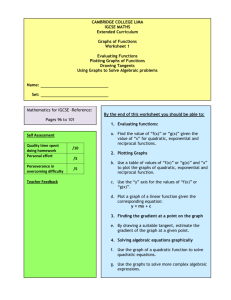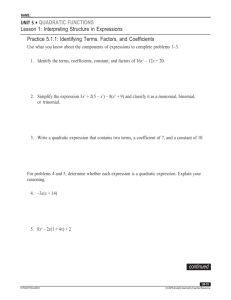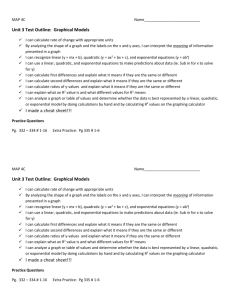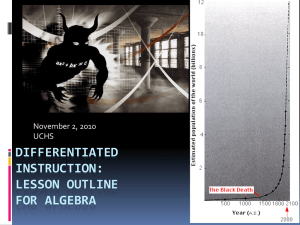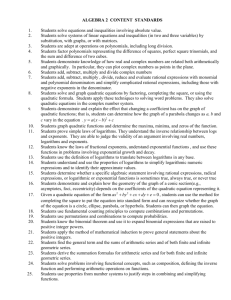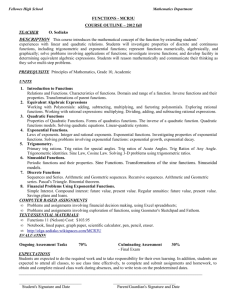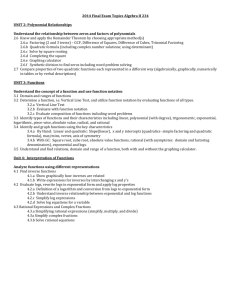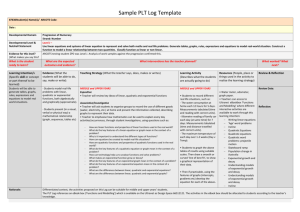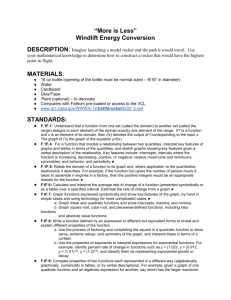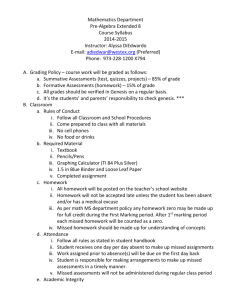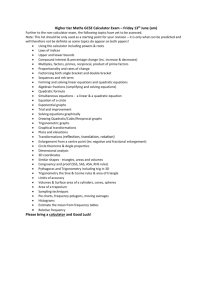Test Information - Wayzata Public Schools
advertisement
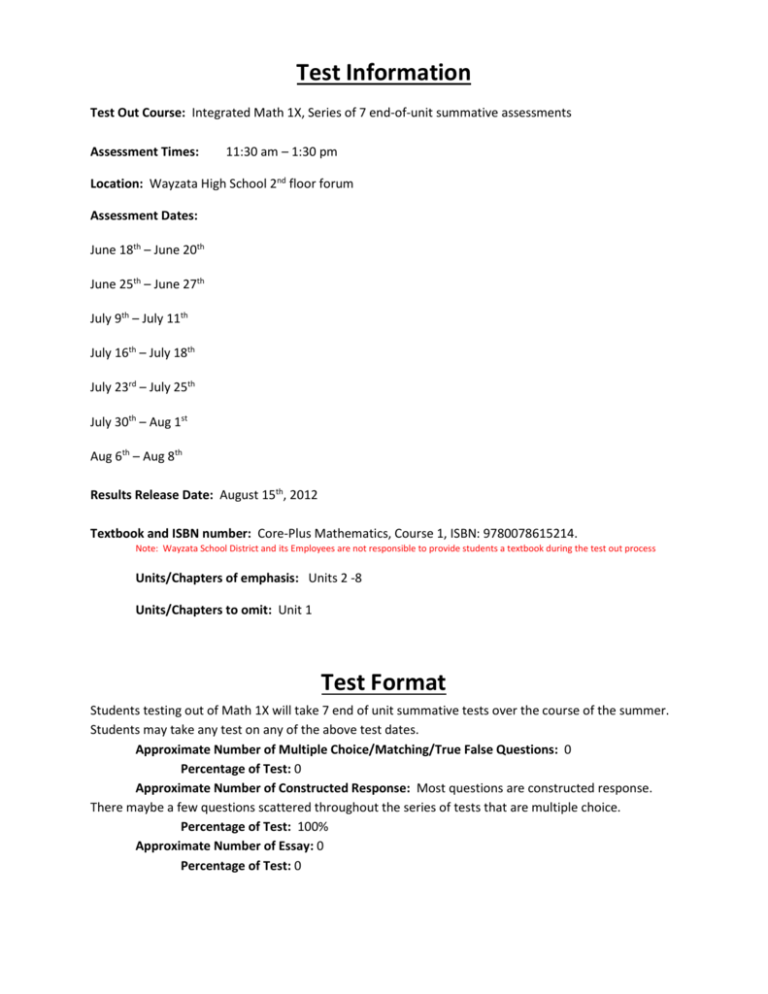
Test Information Test Out Course: Integrated Math 1X, Series of 7 end-of-unit summative assessments Assessment Times: 11:30 am – 1:30 pm Location: Wayzata High School 2nd floor forum Assessment Dates: June 18th – June 20th June 25th – June 27th July 9th – July 11th July 16th – July 18th July 23rd – July 25th July 30th – Aug 1st Aug 6th – Aug 8th Results Release Date: August 15th, 2012 Textbook and ISBN number: Core-Plus Mathematics, Course 1, ISBN: 9780078615214. Note: Wayzata School District and its Employees are not responsible to provide students a textbook during the test out process Units/Chapters of emphasis: Units 2 -8 Units/Chapters to omit: Unit 1 Test Format Students testing out of Math 1X will take 7 end of unit summative tests over the course of the summer. Students may take any test on any of the above test dates. Approximate Number of Multiple Choice/Matching/True False Questions: 0 Percentage of Test: 0 Approximate Number of Constructed Response: Most questions are constructed response. There maybe a few questions scattered throughout the series of tests that are multiple choice. Percentage of Test: 100% Approximate Number of Essay: 0 Percentage of Test: 0 Course Learning Targets/Objectives Unit 2 ▪ Use various graphical displays of data to reveal important patterns in a data set and interpret those patterns in the context of the data. ▪ Compute measures of center and variability for sets of data and interpret the meaning of those statistics. ▪ Transform distributions by adding a constant of by multiplying by a positive constant and recognize how those transformations affect Unit 3 ▪ Recognize patterns in tables of sample values, in problem conditions, and in data plots that can be described as linear functions. ▪ Write linear function rules to describe linear, or approximately linear, patterns in graphs or numerical data. ▪ Use table, graph, or symbolic representations of linear functions to answer questions about the situations they represent: (1) Calculate y for a given x, (2) Find x for a given y, (3) Describe the rate at which y changes as x changes. ▪ Rewrite linear expressions in equivalent forms. Unit 4 ▪ Understand and apply Euler paths and vertex coloring ▪ Use vertex-edge graphs to represent and solve problems related to paths, networks, and relationships among a finite number of objects. ▪ Gain further experience in mathematical modeling by building and using vertex-edge graph models to solve problems in a variety of settings. ▪ Develop skill in algorithmic problem solving: designing, using, and analyzing systematic procedures for solving problems. ▪ Further develop skill in mathematical reasoning by exploring and reasoning about properties of vertex-edge graphs. Unit 5 ▪ Recognize and give examples of growth and decay models which exponential functions are likely matches to the pattern of change. ▪ Explain and recognize exponential models through graphs, tables, next-now, y= rules and words. ▪ Describe similarities and differences between linear and exponential patterns of change. ▪ Develop skill in rewriting exponential and radical expressions in equivalent form. Unit 6 ▪ Recognize and classify common two and three dimensional shapes. ▪ Visualize and represent two and three dimensional shapes. ▪ Analyze and apply properties of polygons and polyhedra. ▪ Begin to develop ability to establish properties of shapes by careful reasoning from definitions and given or assumed facts. Unit 7 ▪ Recognize patterns in tables of sample values, in problem conditions, and in data plots that can be described by quadratic functions ▪ Write quadratic function rules to describe quadratic, or approximately quadratic, patterns in graphs or numerical data ▪ Use table, graph, or symbolic representations of quadratic functions to answer questions about the situations they represent: (1) Calculate y for a given x (i.e., evaluate functions); (2) Find x for a given y (i.e., solve equations and inequalities); s and (3) Describe the rate at which y changes as x changes ▪ Rewrite simple quadratic expressions in equivalent forms by expanding or factoring given expressions and/or by combining like terms Unit 8 ▪ Construct sample spaces and probability distributions and use them to understand chance situations involving equally likely outcomes. ▪ Use the Addition Rule and its special case for mutually exclusive events to compute P(A and B) ▪ Design and carry out simulations in order to estimate answers to questions about probability using random number generators ▪ Use the Law of Large Numbers to understand situations involving chance. ▪ Use geometric diagrams to solve probability problems that involve continuous variables.
